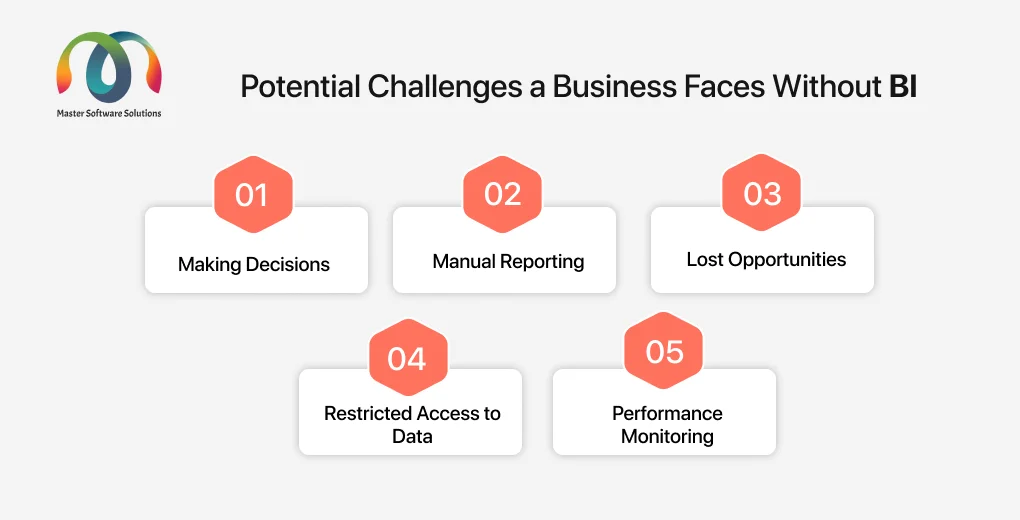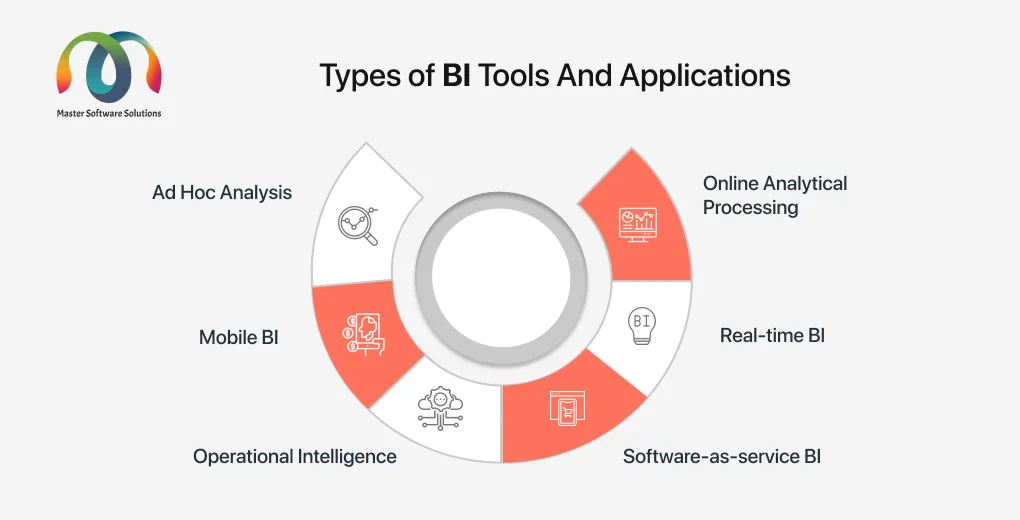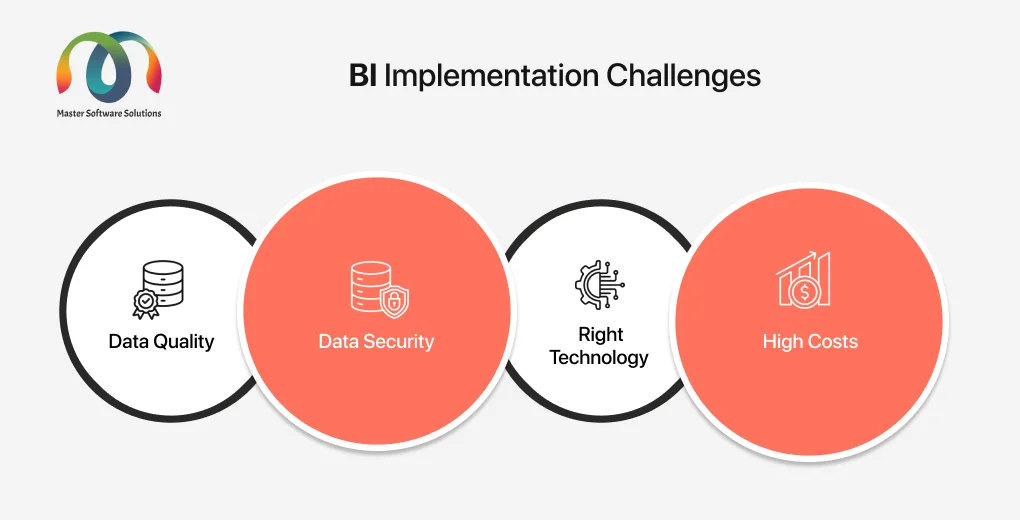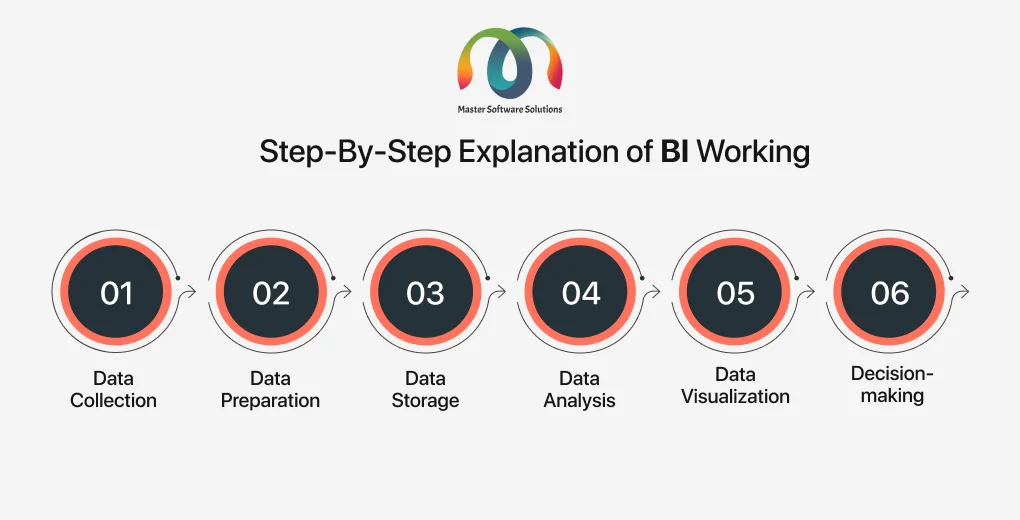What is Business Intelligence? – A Complete Guide
Your business creates massive amounts of data every day, and it has become important to have a clear view of this data to stay competitive. This is where business intelligence comes into the picture.
Nearly 90% of the businesses have already adopted the business intelligence tool. If you are looking to implement a business intelligence tool, this blog can help you understand why you should adopt it.
The blog includes;
What is business intelligence?
Business intelligence is a technology-driven process that combines data analytics, data mining, and data visualization to analyze your data and provide actionable insights to make informed decisions. Today, businesses are using AI and other cloud computing technology to get advanced data analysis that has changed the data analyzed.
The business intelligence tools aim to provide meaningful data insights for better decision-making, help businesses improve their revenue and operational efficiency, and gain a competitive edge over other businesses in the industry.
How does Business Intelligence work?
Business intelligence is more a data analytical tool. It considers modern analytics, including collecting raw data from various systems and processing and storing it in data warehouses, cloud applications, and files.
Step-by-step explanation of BI working
Data collection – The data is sourced from different systems and stored in data warehouses, cloud applications, and files. Data can be collected from internal or external sources. Collecting the data will help you build objectivity in your business and identify the relevant data.
Data preparation – The unstructured data is processed, cleansed, and organized for analysis. Cleaning data is essential to ensuring that the suggested actionable insights are relevant.
Data storage – Business data is stored in a data warehouse. There are smaller data marts, holding data for individual departments of the organization. Businesses often use data lakes (clouds) as repositories of data like log files or sensor data for business intelligence. The data is stored in scattered or unstructured form.
Data Analysis – The data is processed to reveal patterns, trends, and insights. AI-based algorithms are run to extract insights that can help you make informed business decisions. This identifies and rectifies operational issues to improve business efficiency and revenue.
Data visualization – Business intelligence provides data visualization tools to transform data into charts, diagrams, or dashboards for better understanding and presentation to stakeholders.
Decision-making – Using these insights, you and your stakeholders can determine the best action to improve business operations and sales.
Potential challenges a business faces without BI
You are at risk of making poor decisions, facing operational issues, and missing opportunities without a business intelligence tool. Some of these major challenges are:
Making decisions – You do not have facts, which can lead you to make decisions based purely on intuition. These decisions are not rational and often lead to bad decision-making and losses.
Manual reporting – Manually making reports is a tedious and time-consuming task. You might even have to hire staff to create reports and dashboards, which increases your administrative costs.

Lost opportunities – Manually created data reports are not real-time reports. With consistently evolving markets and trends updated quickly, the inability to make leads to lost market opportunities.
Restricted access to data – Lack of business intelligence, your data is inadequate to help you make better decisions.
Performance monitoring – Monitoring business KPIs without a BI system can be difficult and doesn’t allow you to identify and resolve issues.
What are the benefits of BI?
Implementing BI tools can help you mine relevant data for relevant information. For instance, customer churn volume can help you identify the reason for increased churn and enable you to implement strategies to reduce churn rates. Some of the benefits of business intelligence tools are:
Reduced complexity – You cannot manage scattered data across multiple systems. You can integrate these systems with business intelligence systems to store all the data in a single system. The system allows you to clean and process to simplify and improve its visibility.
Data accessibility
Business intelligence stores your data on a unified platform, making it easily accessible. A cloud-based business intelligence tool makes it easy to access and use the data anytime and anywhere.
Enhanced productivity
Better data accessibility enables you to make the best use of data to improve business productivity. Advanced BI software solutions use artificial intelligence, machine learning, and robotic process automation that enable better decision-making.

Real-time data
With BI tools, you have access to real-time data that allows you to make quick decisions. With the right data at your fingertips, you can make efficient and better decisions to improve your business operations and increase productivity and profitability. This accessibility allows your business to stand out in the competitive market landscape.
High data quality
The BI tools cleanse and sort your scattered data to provide high-quality data that can help you understand the key performance indicators of your business to identify issues and create strategies to resolve them. With irrelevant and low-quality data, you can make faulty decisions that impact your business operations and financials.
Better decision-making
With BI and data visualization, you get clear and actionable business insights to help you make better and quicker decisions. These data visualizations are based on accurate data that provides insights to make decisions that are in the best interest of your business.
Trend insights
AI and ML-driven business intelligence solutions provide insights on the latest trends, which empowers your business to easily adapt to quickly changing market trends. These tools identify the changing market trends and allow you to make short-term and long-term strategies for your business.
Types of BI tools and applications
Business intelligent software combines various data analytical applications. These analytical applications are customized to fulfill specific business needs. Most of the BI apps are self-service BI software and traditional BI software supported. The BI technologies available are:
Ad Hoc analysis – Ad Hoc analysis or Ad Hoc querying, is one of the essential components of BI software. Ad hoc analysis is a process where you write and run queries to analyze specific business issues. The BI solution provides answers to the run queries. This analysis is done regularly to explore data and adjust the parameters in real-time.
Online analytical processing – It refers to organizing and analyzing large business data along multiple dimensions that support business intelligence. Online analytical processing, or OLAP, solves complex queries and calculations. OLAP can help you analyze trends like customer buying patterns.

Mobile BI – Mobile business intelligence makes BI dashboards available on mobile applications. These make the analytics more accessible and handy for business managers and executives to make instant decisions.
Real-time BI – Real-time BI collects and analyzes data in real-time to provide a regularly updated view of your business operations, customer behavior, and financials. Real-time business intelligence is highly beneficial for businesses that need real-time data streamlining, like stock trading institutions.
Operational intelligence – Operational business intelligence (BI) delivers meaningful insights to business managers and frontline workers. OI systems aim to help make operational decisions and resolve issues faster. For instance, in call centers and logistics managers to resolve customer and distribution issues respectively.
Software-as-service BI – They are cloud-based solutions that store your data on the cloud. SaaS-based BI systems allow you to choose the cloud hosting platforms of your choice and avoid vendor lock-ins.
Business Intelligence for Big Data
Big data is a term used to describe large and complex datasets. The data can be unstructured or semi-structured and are difficult to handle. These are stored in databases like Amazon, MongoDB, and Azure. They have a user-friendly interface and provide a unified view of your data. These databases act as staging areas for your data. It filters and load to the data warehouse for processing in a business intelligence system.
Business intelligence vs data analytics and business analytics
BI, data analytics, and business analytics are similar terminologies and related, but have different purposes based on their focus and use cases.
BI tools analyze historical and current data to understand the current scenario. It uses descriptive analysis that provides answers like what and how. These answers assist businesses in addressing the problem.
Data analytics runs algorithms to extract meaningful insights and resolve problems. These help identify trends, find hiccups, and measure key performance indicators to identify future trends.
Business analytics uses data mining, modeling, and machine learning to identify trends and predict future trajectories. It focuses on predictive analysis, answering questions like why. It provides the reason for things happening and if there is a chance that they will happen again. This helps you anticipate growth and adjust your strategies accordingly.
BI Implementation Challenges
Implementing a business intelligence platform can help you analyze your data and make decisions. Implementing BI into a business may come with many challenges. Some of the major implementation challenges are:
Data quality and integrations – Poor data quality, incomplete or inconsistent data, and duplicity can hamper accurate analysis. It is tedious to combine data from various sources, especially if the data formats differ.

Data security – Handling sensitive data and complying with regulations is crucial. It raises privacy concerns and industrial regulations with GDPR and HIPAA.
Right technology – Various business intelligence and data analytics tools are available. It is important to choose the right one to ensure high system performance or compatibility with existing systems.
High cost – Implementing BI and analytics solutions, including software, hardware, training, and ongoing maintenance, is expensive.
How can we help?
Master Software Solutions is an IT consulting and development service provider that works on business intelligence and data analytics systems, like PowerBI, Tableau, and Superset, to provide end-to-end business intelligence solutions for retail and logistics. We are a team of 90+ proficient technical professionals with over 12 years of experience. Discuss your business with our BI experts to get a free audit.


